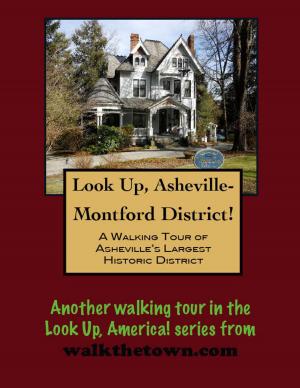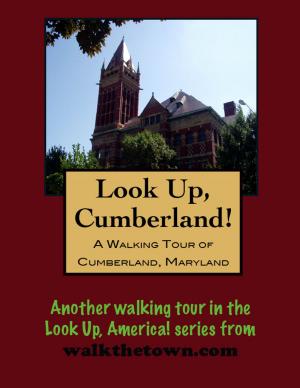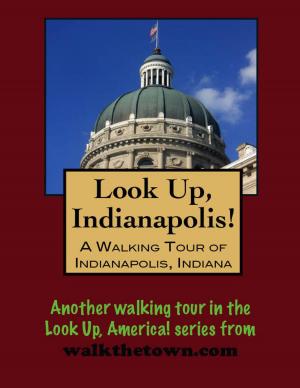Look Up, Olympia! A Walking Tour of Olympia, Washington
Nonfiction, Travel, Lodging & Restaurant Guides| Author: | Doug Gelbert | ISBN: | 9781301837595 |
| Publisher: | Doug Gelbert | Publication: | November 9, 2012 |
| Imprint: | Smashwords Edition | Language: | English |
| Author: | Doug Gelbert |
| ISBN: | 9781301837595 |
| Publisher: | Doug Gelbert |
| Publication: | November 9, 2012 |
| Imprint: | Smashwords Edition |
| Language: | English |
There is no better way to see America than on foot. And there is no better way to appreciate what you are looking at than with a walking tour. Whether you are preparing for a road trip or just out to look at your own town in a new way, a downloadable walking tour is ready to explore when you are.
Each walking tour describes historical and architectural landmarks and provides pictures to help out when those pesky street addresses are missing. Every tour also includes a quick primer on identifying architectural styles seen on American streets.
When Olympia was founded in 1848 it was still part of the vast Oregon Territory. Edmund Sylvester, who had grown up working the impossibly rich fishing grounds off Gloucester, Massachusetts, and Levi Lathrop Smith, a Presbyterian divinity student, each claimed a 320-acre land grant from the Oregon Provisional Government around the southern shores of Puget Sound. The two struck a pact that should either die, the survivor would gain the whole of Smither, which they christened their property from a mingling of surnames. It did not take long for the morbid pact to play out as Smith suffered an epileptic seizure while piloting a canoe and drowned.
Sylvester laid out building lots and the United States Congress authorized a custom house in 1851 that was the first port of entry created on Puget Sound. When Colonel Isaac N. Ebey arrived to take the post of customs collector he persuaded Sylvester to change the town name to reflect the magnificent Olympic Mountains visible to the north. About the same time a new territory was cleaved off the Oregon Territory north of the Columbia River in March of 1853 and Olympia was proclaimed capital. Six years after Sylvester and Smith made their wilderness claims a Territorial legislature was convening on the land. Olympia was incorporated as a town in 1859 with a population of 1,489.
Over the years there were repeated efforts to haul the capital away from Budd Inlet and down to the Columbia River. Roads were bad and the railroad didn't reach town until the 1880s but the Territorial government remained anchored in Olympia. When another vote was taken to the move the capital upon statehood in 1889 Olympia prevailed with 37,413 ballots out of 41,416 cast.
Although oystering and logging and distribution all brought jobs to Olympia it has been at heart a government town, serving as county seat for Thurston County as well as state capital. Much of the streetscape reflects that service, a panorama of shaded avenues and low-rise structures. That streetscape was permanently altered in 1949 when a 7.1 magnitude earthquake jolted the Puget Sound region. Almost all large buildings in Olympia suffered some damage and when repairs were made and structures shored up a great deal of early architectural personality was lost.
Out walking tour of the Washington capital will move from downtown out several blocks to Capitol Campus and we will begin on a still empty remnant of land from Edmund Sylvester's first sketch of his planned townsite...
There is no better way to see America than on foot. And there is no better way to appreciate what you are looking at than with a walking tour. Whether you are preparing for a road trip or just out to look at your own town in a new way, a downloadable walking tour is ready to explore when you are.
Each walking tour describes historical and architectural landmarks and provides pictures to help out when those pesky street addresses are missing. Every tour also includes a quick primer on identifying architectural styles seen on American streets.
When Olympia was founded in 1848 it was still part of the vast Oregon Territory. Edmund Sylvester, who had grown up working the impossibly rich fishing grounds off Gloucester, Massachusetts, and Levi Lathrop Smith, a Presbyterian divinity student, each claimed a 320-acre land grant from the Oregon Provisional Government around the southern shores of Puget Sound. The two struck a pact that should either die, the survivor would gain the whole of Smither, which they christened their property from a mingling of surnames. It did not take long for the morbid pact to play out as Smith suffered an epileptic seizure while piloting a canoe and drowned.
Sylvester laid out building lots and the United States Congress authorized a custom house in 1851 that was the first port of entry created on Puget Sound. When Colonel Isaac N. Ebey arrived to take the post of customs collector he persuaded Sylvester to change the town name to reflect the magnificent Olympic Mountains visible to the north. About the same time a new territory was cleaved off the Oregon Territory north of the Columbia River in March of 1853 and Olympia was proclaimed capital. Six years after Sylvester and Smith made their wilderness claims a Territorial legislature was convening on the land. Olympia was incorporated as a town in 1859 with a population of 1,489.
Over the years there were repeated efforts to haul the capital away from Budd Inlet and down to the Columbia River. Roads were bad and the railroad didn't reach town until the 1880s but the Territorial government remained anchored in Olympia. When another vote was taken to the move the capital upon statehood in 1889 Olympia prevailed with 37,413 ballots out of 41,416 cast.
Although oystering and logging and distribution all brought jobs to Olympia it has been at heart a government town, serving as county seat for Thurston County as well as state capital. Much of the streetscape reflects that service, a panorama of shaded avenues and low-rise structures. That streetscape was permanently altered in 1949 when a 7.1 magnitude earthquake jolted the Puget Sound region. Almost all large buildings in Olympia suffered some damage and when repairs were made and structures shored up a great deal of early architectural personality was lost.
Out walking tour of the Washington capital will move from downtown out several blocks to Capitol Campus and we will begin on a still empty remnant of land from Edmund Sylvester's first sketch of his planned townsite...















